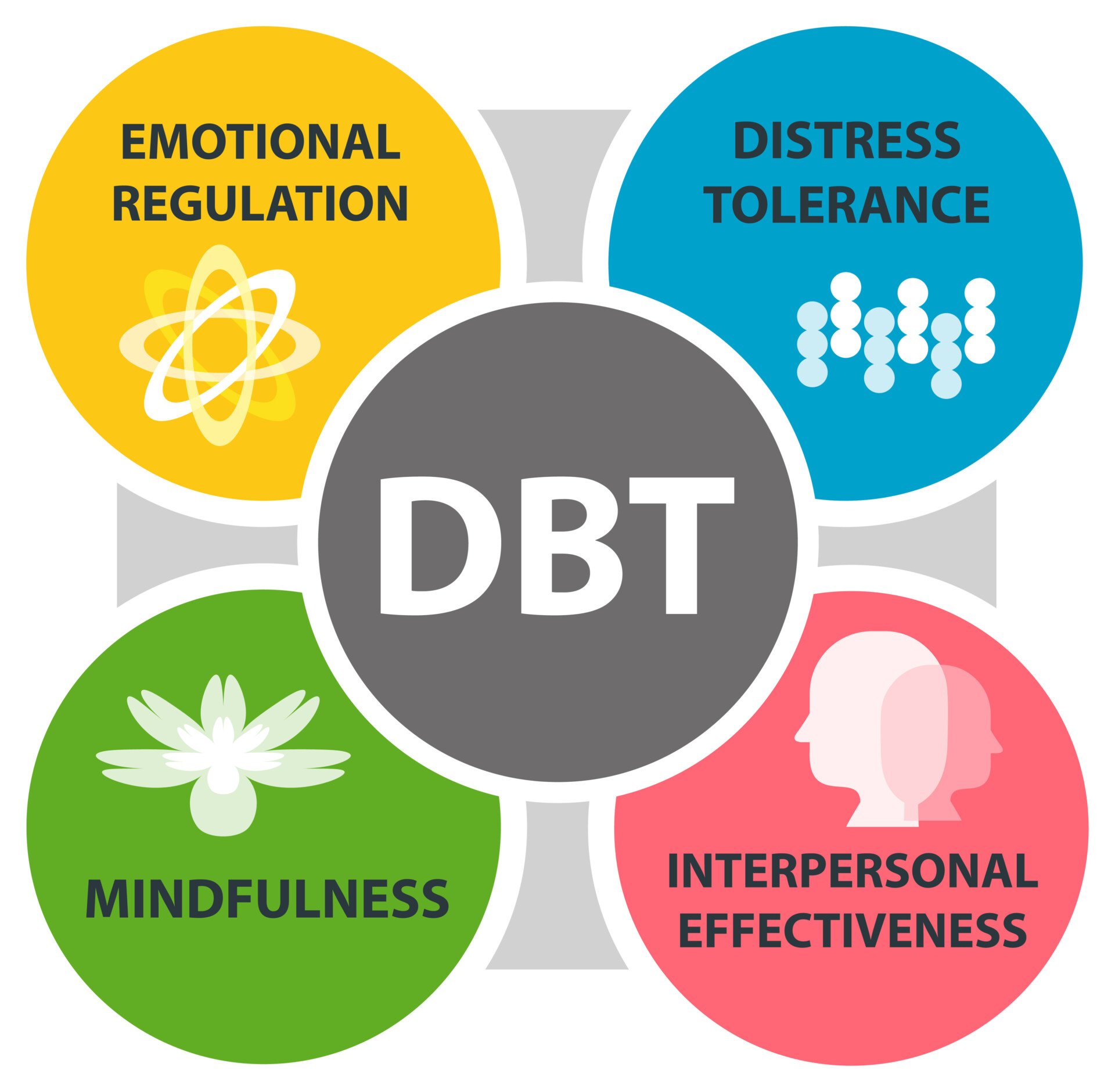Dialectical Behavior Therapy (DBT) has gained recognition as a transformative psychological modality, particularly effective for individuals grappling with emotional dysregulation and interpersonal conflicts. Developed by Dr. Marsha Linehan in the late 1980s, DBT integrates cognitive-behavioral techniques with mindfulness practices, yielding a robust framework for therapeutic intervention. This article delves deeply into the implications of DBT, especially through video mediums, to illuminate its mood-boosting potential and broader psychological applications.
At its core, DBT operates under the premise of dialectics, which posits that two seemingly contradictory ideas can coexist. This dynamic forms the essence of its therapeutic approach; clients learn to balance acceptance and change, fostering self-awareness and emotional resilience. Videos illustrating DBT principles can transcend traditional therapy sessions, offering vivid, experiential insights that enhance the learning process. The following sections will explore the foundational elements of DBT, its enhancement via video media, and the tangible mood-boosting effects experienced by participants.
Understanding the Core Principles of Dialectical Behavior Therapy
DBT is underpinned by four fundamental components: mindfulness, distress tolerance, emotion regulation, and interpersonal effectiveness. Each of these modules equips individuals with vital skills to navigate life’s complexities. Mindfulness, the cornerstone of DBT, cultivates present-moment awareness, enabling clients to observe their thoughts and feelings without judgment. Through mindfulness practices, individuals learn to detach from their emotional triggers, thereby enhancing their focus and reducing reactivity.
Distress tolerance skills serve as critical mechanisms for coping with acute emotional episodes. By employing techniques such as self-soothing and distraction, clients can effectively stabilize their mood during crises. This is particularly relevant for individuals experiencing severe mood disorders, where overwhelming emotions can precipitate significant impairment. Videos elucidating these techniques often include role-playing scenarios, providing real-life context and demonstrating practical applications. Observing these strategies in action can lead to immediate psychological relief, emphasizing the practicality of DBT in everyday situations.
Emotion regulation, another pivotal module, is aimed at helping individuals understand and modulate their emotional responses. Clients are taught to identify triggers, recognize emotional patterns, and ultimately develop healthier coping mechanisms. Interactive video content can be particularly advantageous here; visuals paired with guided narratives can help create an empathetic connection, encouraging viewers to relate their experiences to those portrayed in the material. As a result, individuals may find themselves feeling less isolated in their struggles, leading to enhanced emotional stability and mood elevation.
Lastly, interpersonal effectiveness skills promote healthier relationships through improved communication, boundary-setting, and conflict resolution strategies. The ability to engage with others constructively not only bolsters self-esteem but also fosters a supportive social network, which is indispensable for psychological well-being. Videos demonstrating these skills in various contexts can empower individuals to take actionable steps towards improving their personal interactions, thereby enhancing their overall life satisfaction.
The Role of Video in Enhancing DBT: Visual Learning and Emotional Resonance
The advent of digital media has revolutionized therapeutic modalities. Videos showcasing DBT not only serve as educational tools but also as mood enhancers by creating immersive learning experiences. The audiovisual format captures attention and facilitates greater retention of information compared to traditional methods. Through engaging narratives and relatable scenarios, individuals can internalize DBT concepts more effectively and effortlessly.
Moreover, video content often incorporates testimonials and case studies that demonstrate the transformative power of DBT. Witnessing real-life accounts of resilience and triumph can be profoundly uplifting. Many individuals report experiencing an emotional catharsis when observing others articulate struggles they have faced, often echoing similar sentiments in their own lives. This emotional resonance can catalyze a mood-boosting experience, instilling hope and motivation to pursue therapeutic interventions.
Interactive video platforms also offer users the opportunity to engage with DBT content in a personalized manner. Some platforms provide quizzes, reflective exercises, and discussion forums that enhance viewer engagement. This interactive element fosters a sense of community, combating feelings of isolation. Participants often find that sharing their experiences and insights with others in a virtual setting invigorates their commitment to self-improvement. Such social connectivity can significantly mitigate symptoms of depression and anxiety, creating a collective atmosphere of support and encouragement.
Mood-Boosting Effects of DBT: Psychological Transformation through Skill Acquisition
The mood-boosting effects of DBT are multifaceted and deeply intertwined with the skills that clients acquire through the therapeutic process. Participants report substantial improvements in emotional regulation, leading to decreased instances of emotional upheaval. By learning to recognize and articulate their emotions, individuals can transform their experiences from overwhelming crises into manageable events, yielding a sense of empowerment and agency.
Furthermore, the structured approach of DBT provides clients with tangible goals and milestones to work toward. This goal-oriented framework can bolster motivation, as individuals witness their progress through the acquisition and application of new skills. Video content that highlights personal journeys and success stories can reinforce this progress, encouraging viewers to continue their pursuit of emotional well-being.
Another critical aspect of DBT is the emphasis on self-compassion and acceptance. As clients learn to extend kindness toward themselves, they cultivate a healthier self-image. This inner transformation is often reflected in increased social engagement and activity participation, both of which are crucial for enhancing mood. Regular social interactions, as a result of improved relationship skills, can stave off feelings of loneliness and despair, further contributing to elevated emotional states.
Conclusion: A Pathway to Emotional Well-Being
Dialectical Behavior Therapy, particularly as presented through video mediums, represents a powerful conduit for emotional healing and personal growth. By equipping individuals with practical tools to navigate their emotional landscape, DBT not only enhances mood but also fosters long-lasting psychological resilience. The ability to visualize concepts via engaging video content further cements the transformative essence of DBT, resonating with participants on a profound level. As more individuals access these invaluable resources, the collective impact on emotional well-being can be monumental—paving the way toward a more balanced and fulfilling existence.
